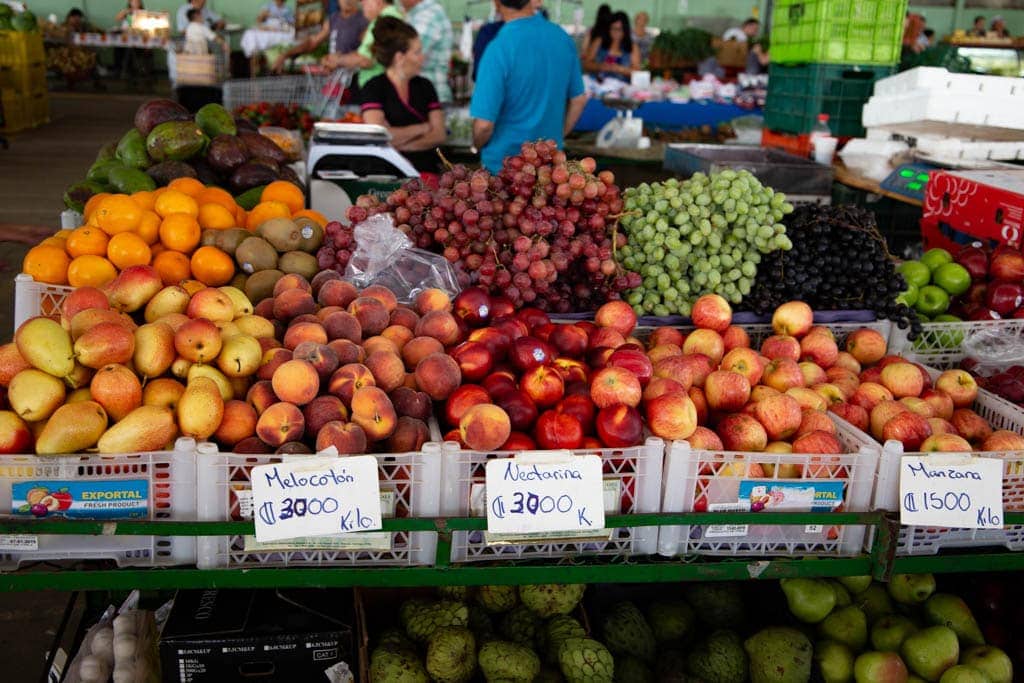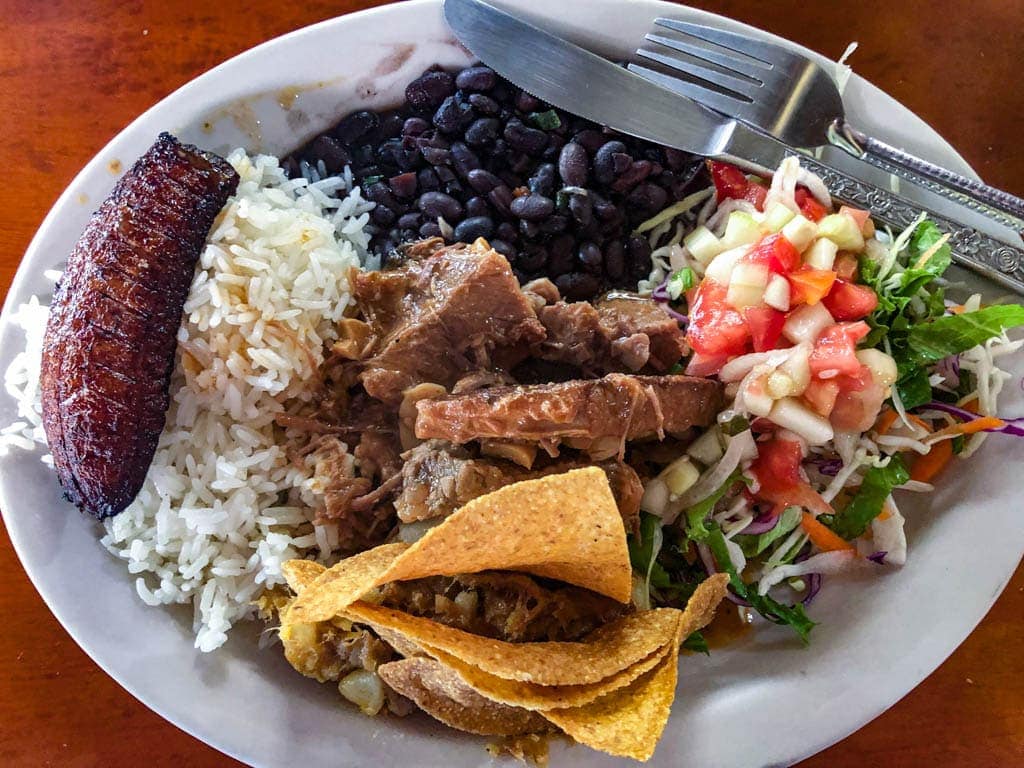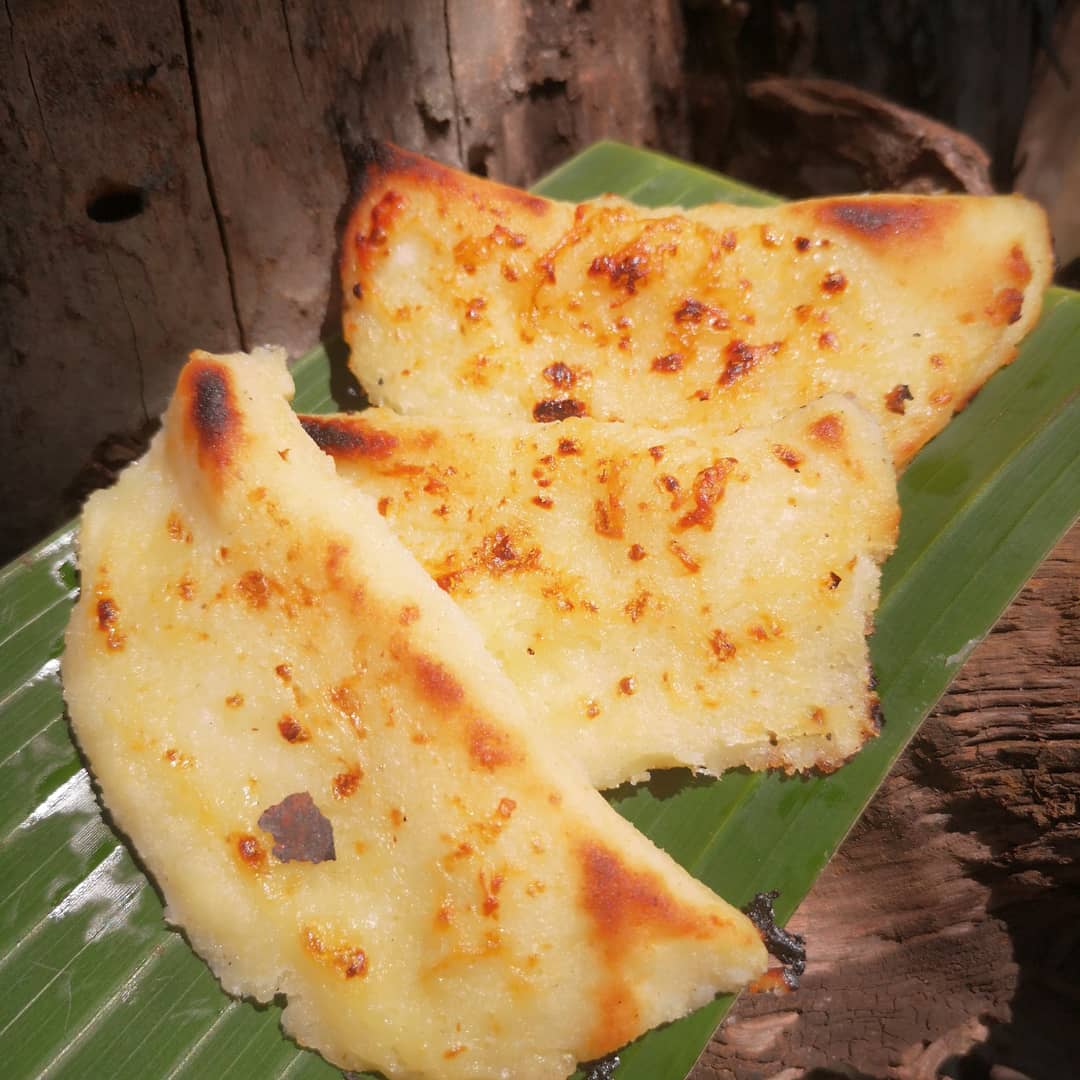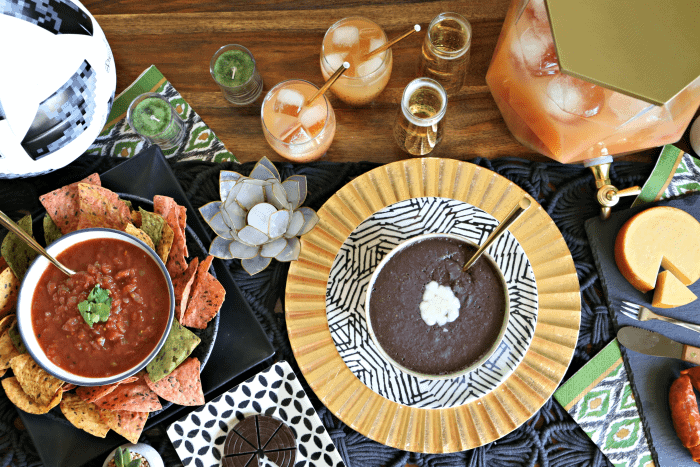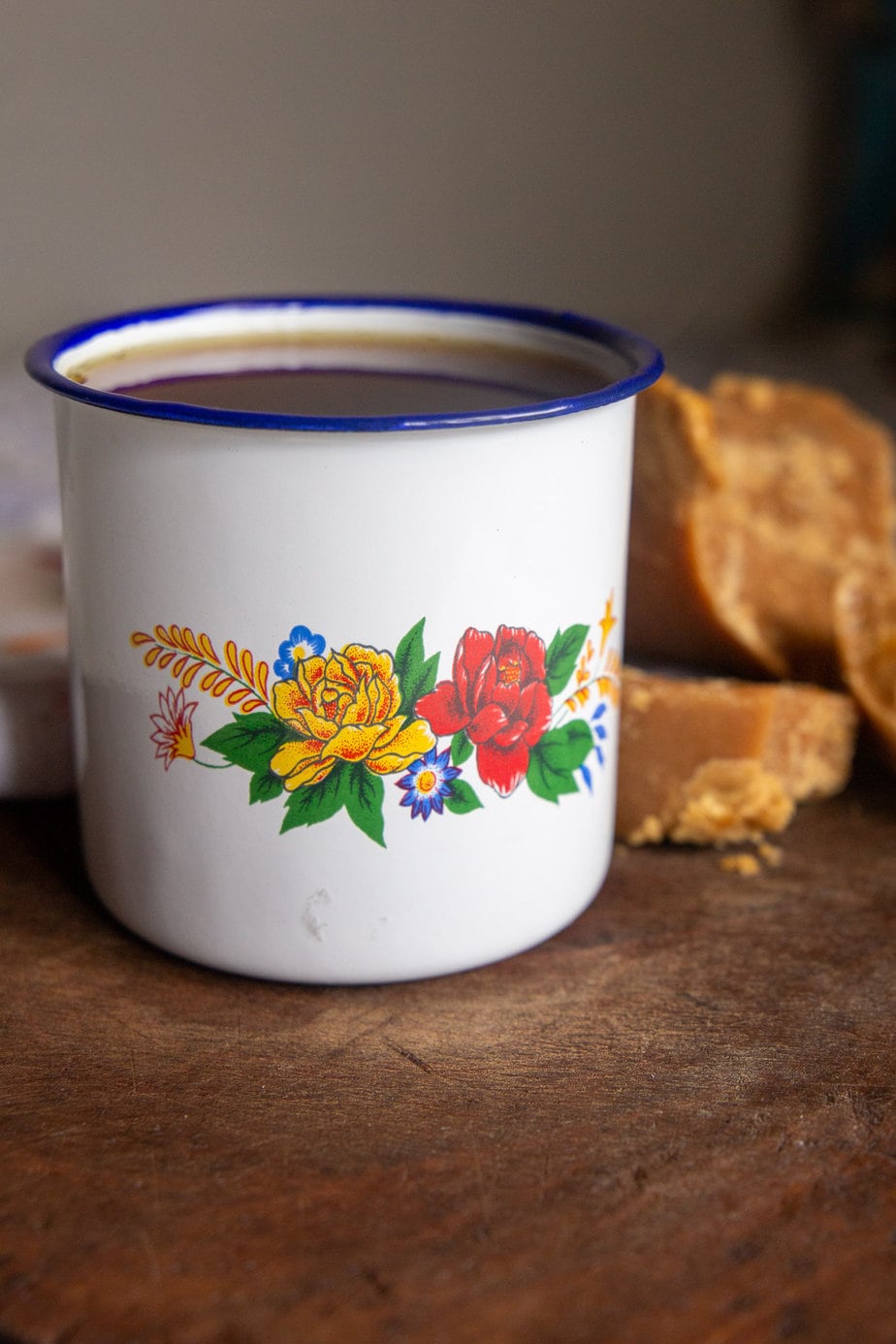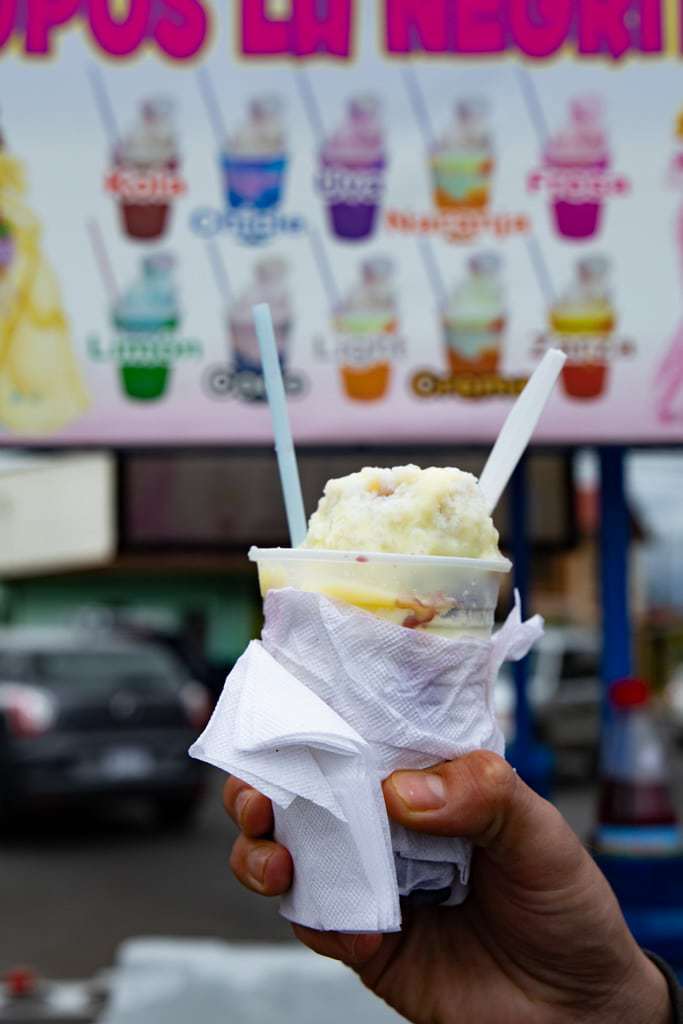Kick-Ass Chicharrones Recipe
This post may contain affiliate links.
Everyone remembers the best, mouthwatering chicharron they’ve ever had… and who doesn’t want to recreate their favorite dish? This chicharrones recipe uses all pork meat (no pork rind here!) and is the traditional Costa Rican version of the popular Latin American dish. You’ll love it!
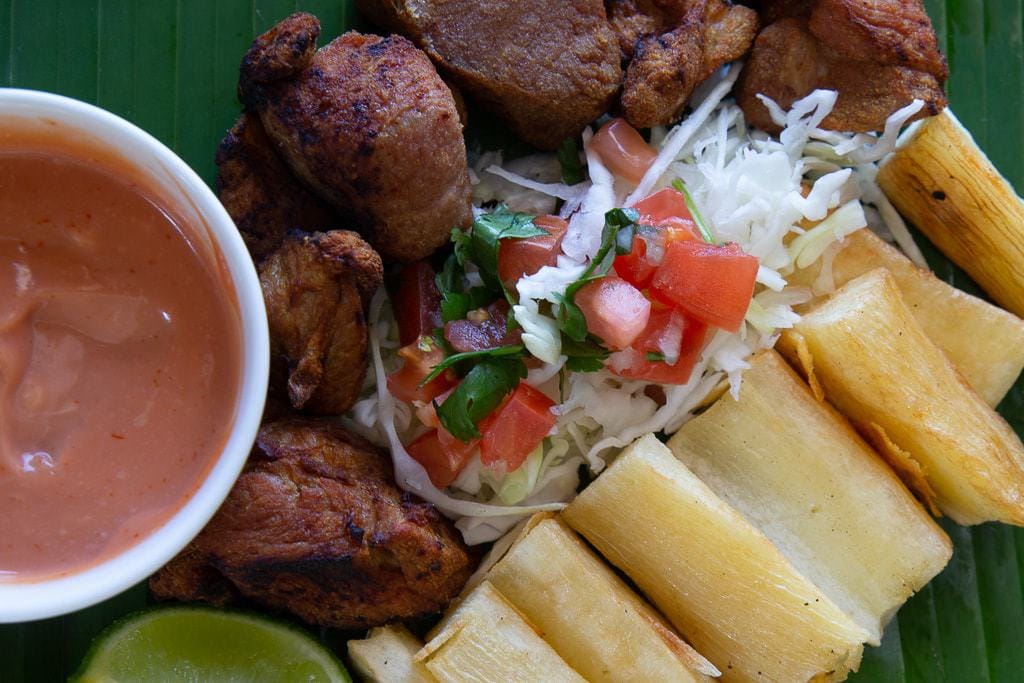
About This Chicharrones Recipe
This is a traditional Costa Rican chicharrón recipe that uses pork belly or boneless pork ribs- known in Spanish as chicharrón de cerdo or chicharrón de puerco. There is another type of chicharron in Costa Rica that is made from fried pork skin- but that’s not this recipe.
In Costa Rica, chicharrones are generally either pan-fried or made in a deep fry using pork. The recipe is hardly just Costa Rican, however, it goes by many names around the world, including pork cracklings, pork belly rinds, pork rinds, or simply fried pork.
Chicharrones are generally on most menus in Costa Rica, and you can find some restaurants that dedicate themselves solely to all things pork- they are generally in the Central Valley of Costa Rican and called chicharroneras. Chicharrones are a popular party food and Costa Rican appetizer.
We use chicharrones in the popular Chifrijo recipe, and the popular Costa Rican street food known as the vigorón. They are a popular Keto snack.
Our Most Popular Costa Rican Recipes:
- Traditional Costa Rican Gallo Pinto Recipe
- Costa Rican Tres Leches Recipe
- Super Easy and Delicious Costa Rican Arroz con Pollo Recipe
- Costa Rican Tamales Recipe
- Delightful Baked Costa Rican Empanadas de Chiverre
- Garbanzo Bean Soup Recipe
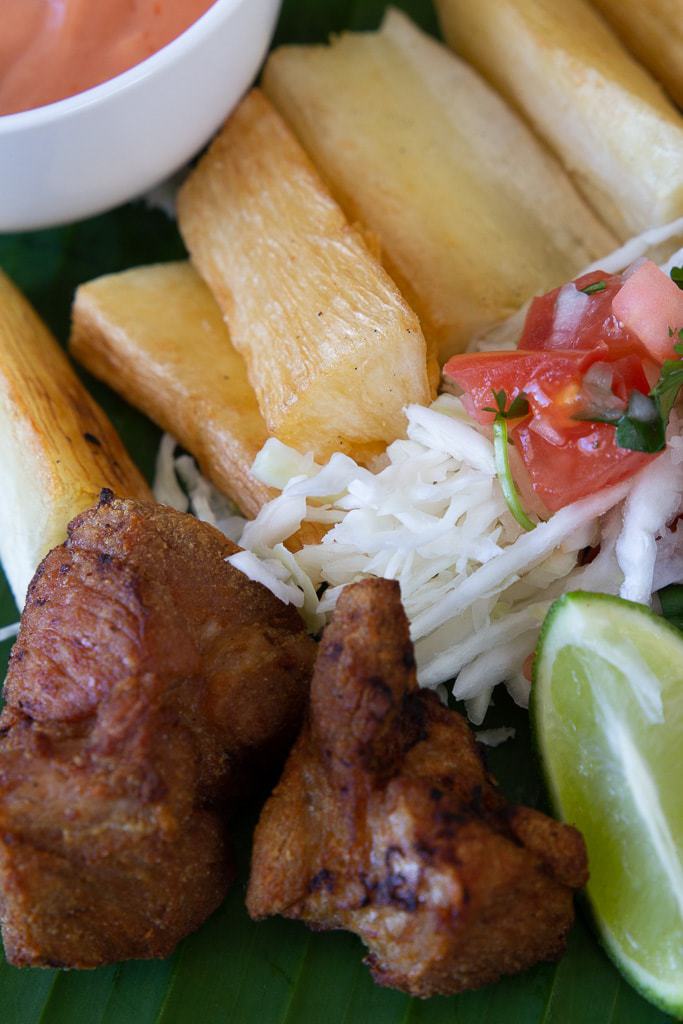
Costa Rican Chicharrones Recipe
(Printable Recipe Card Below)
Ingredients:
- pork belly or boneless pork ribs
- cooking oil (for frying- I use vegetable oil)
- lime
- garlic cloves
- salt or Maggi chicken bullion
Instructions:
Cut the pork into 1/2 – 2-inch cubes (or just cut into bite size pieces) and place in a marinating bowl. Juice the lime and press the garlic. Mix in the lime, garlic, and salt. Cover and refrigerate overnight.
In a frying pan (I use a cast-iron skillet), heat the oil to about 350 degrees Fahrenheit. Using tongs or a slotted spoon, carefully place the pork pieces into the hot oil. If you are using pork belly, fry the pork with the skin side down.
Fry for 15-20 minutes, until the internal temperature, reaches at least 145 degrees Fahrenheit, and the inside is no longer pink. Be careful to check the temperature- it’s really easy for the chicharron to look crispy on the outside and be totally raw on the inside. This is why I generally fry them for longer and at a lower temperature. If you put them at too high of heat, they can burn on the outside also.
Using a slotted spoon, remove the chicharrones carefully and pat off excess oil using paper towels. Serve the chicharron with yucca fries, salsa rosada, and a Costa Rican cabbage salad.
Substitutions
FAST METHOD- If you don’t want ot marinate overnight you can just marinate everything for 10-15 minutes. The flavors won’t be quite as strong, but it works well when you are having a craving and short on time!
For this chicharrones recipe, you can really use any type of bouillon cube (tomato, beef, chicken, seafood, etc).
I have used lemon instead of lime with no problem.
You can use garlic powder in place of crushed garlic as well.
You can fry in any oil you prefer too- peanut oil or canola oils both give a good flavor. Many Costa Ricans will fry chicharrones in pork fat as well.
Variations
You could cut down on the fat content in this chicharrones recipe by slow cooking or baking the pork and then flash-frying it just before serving. A chicharron is always crispy.
Some people make chicharrones de pollo using chicken bites, or chicharrones de res using boneless beef ribs. The marinating and frying process is the same for both of those.
Some people sprinkle the meat with onion powder before frying for a distinct flavor.
Join me over at my favorite place- Instagram.
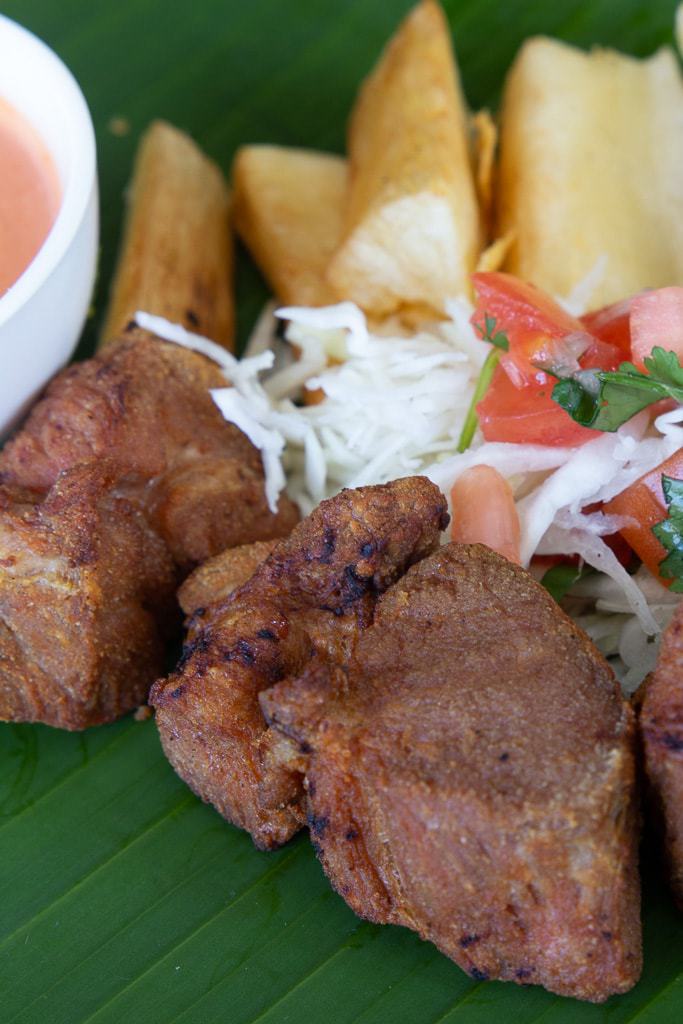
Serving Suggestions
This chicharrones recipe is usually served with fried yucca sticks, Costa Rican chimichurri, salsa rosada and lots of lime.
Traditional restaurants will serve the chicharrón on a wooden board covered with a banana leaf. Sometimes a homemade Costa Rican tortilla will accompany the dish as well.
The chicharrón is an essential part of both the Costa Rican Chifrijo recipe and the Costa Rican Vigorón.
We also serve them with Costa Rican boiled plantains.
FAQ
Where can I buy the meat for this chicharrones recipe?
If you are looking to buy meat in the US, I look for pork belly or boneless pork ribs- I find them most often at Costco and Walmart for a really great price. I often buy a large amount of pork, save a pound or so for the chicharrón and use the rest to make my Pork Carnitas tacos.
Where can I buy chicharrones in Costa Rica?
In Costa Rica, you can expect to find them on most menus. You can also buy them in the grocery store in prepackaged form, but they are the pork skins only, not the meat.
Can I make this chicharrones recipe ahead of time?
You can- but it’s just not the same. Some recipes, like the vigorón, will have room temperature or cold chicharrones, but mostly they are served piping hot.
Printable Chicharrones Recipe
Costa Rican Chicharron Recipe
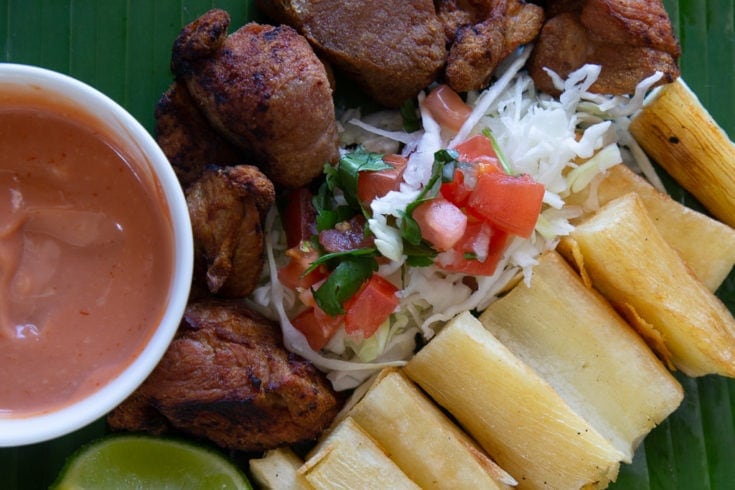
This chicharrón recipe uses marinate pork belly fried until crispy on the outside and tender on the inside. Popular throughout Costa Rica and the rest of the world, this recipe is big on flavor and low on prep.
Ingredients
- 2 lbs pork belly or boneless pork ribs
- 2-3 cups cooking oil (for fying, I use vegetable oil)
- 1 lime, juiced
- 2-3 garlic cloves, pressed
- 1 tablespoon salt or chicken bullion ("Maggi")
Instructions
- Cut the pork into 1/2 - 2-inch cubes and place in a marinating bowl. Mix in the lime, garlic, and salt. Cover and refrigerate overnight.
- In a frying pan (I use a cast-iron skillet), heat the oil to about 350 degrees Fahrenheit.
- Using tongs or a slotted spoon, carefully place the pork pieces into the hot oil.
- Fry for 15-20 minutes, until the internal temperature, reaches at least 145 degrees Fahrenheit, and the inside is no longer pink.
- Be careful to check the temperature- it's really easy for the chicharron to look crispy on the outside and be totally raw on the inside.
- This is why I generally fry them for longer and at a lower temperature.
- Remove from oil, pat dry and serve.
Recommended Products
As an Amazon Associate and member of other affiliate programs, I earn from qualifying purchases.
Nutrition Information:
Yield:
8Serving Size:
1Amount Per Serving: Calories: 1858Total Fat: 195gSaturated Fat: 21gTrans Fat: 2gUnsaturated Fat: 166gCholesterol: 110mgSodium: 911mgCarbohydrates: 1gFiber: 0gSugar: 0gProtein: 30g
Please double-check this information with your favorite nutrition calculator.
Don’t forget to pin it!
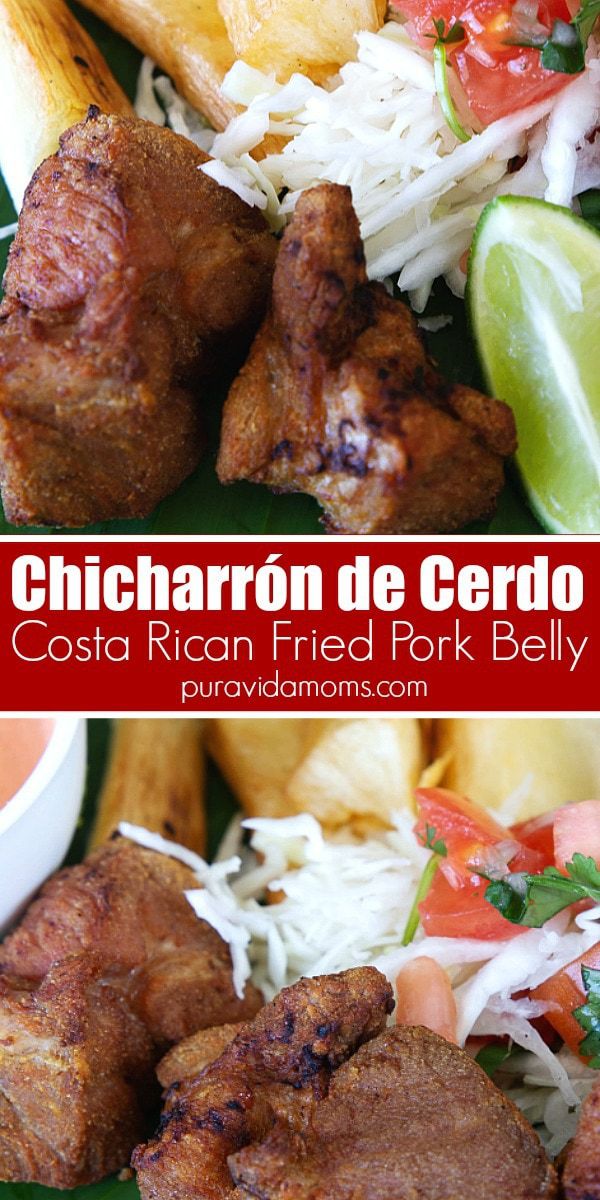

Christa Jimenez
Welcome! I’m Christa, a Spanish teacher married to a handsome Costa Rican and mother of two bilingual daughters. We’ve spent over 25 years living in and traveling to Costa Rica with our daughters, and this website is my love letter to all things Costa Rica- and to bilingual parenting too. You can read my full story here. Thanks for stopping by!


